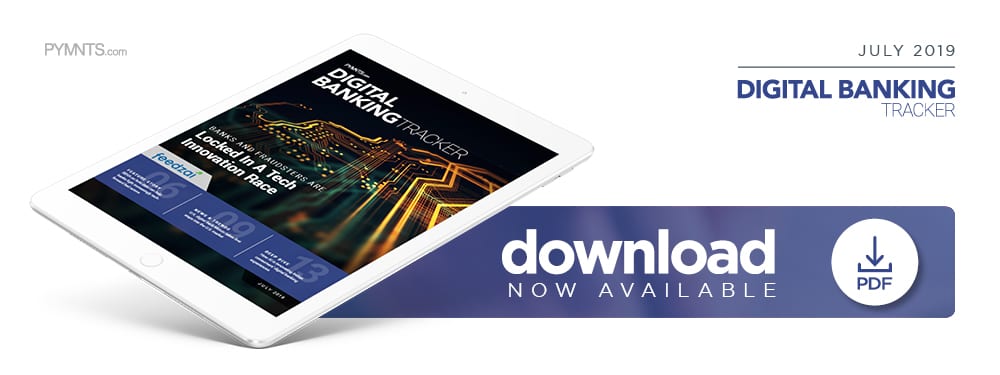Deep Dive: How AI And Automation Are Changing Digital Banking In India

 Many Indian consumers are making their first forays into the digital financial ecosystem as demonetization continues to shrink the country’s age-old reliance on cash. To accommodate this shift and the nation’s growing number of internet and smartphone users, tech giants like Amazon and Facebook are launching digital banking solutions focused on mobile devices.
Many Indian consumers are making their first forays into the digital financial ecosystem as demonetization continues to shrink the country’s age-old reliance on cash. To accommodate this shift and the nation’s growing number of internet and smartphone users, tech giants like Amazon and Facebook are launching digital banking solutions focused on mobile devices.
Digital banking players worldwide — including those in India — are turning to advanced learning technologies like artificial intelligence (AI) and machine learning (ML) to personalize their offerings and draw users onto their platforms. Seventy-five percent of financial institutions with assets above $100 billion are already implementing AI, for example, and banks across all levels are following suit.
These FIs are increasingly relying on AI and automation not only to secure platforms and streamline their back-office operations, but also to improve their customer-facing services. The following Deep Dive explores AI’s fraud-fighting uses and how the technology can offer more personalized services.
Chatbots, AI and Personalization in Indian Banking
Consumer-facing AI solutions are becoming popular as Indian consumers increasingly rely on smartphones to satisfy their banking needs. Smart chatbots represent one area that has witnessed sustained growth over the past few years, for example.
India’s ICICI Bank launched its AI-enabled virtual assistant iPal in 2017, and the offering now supports an average of 1.5 million customer queries each month. ICICI Bank has also expanded the chatbot’s functionality since its rollout, and it now allows users to search for ATM locations or branches as well as ask a wider range of questions. iPal currently has a 90 percent accuracy rate, and the bank is experimenting with natural language processing (NLP) to further improve that figure.
Other FIs are turning to chatbots as more consumers embrace digital banking, too. HDFC Bank introduced its EVA chatbot in 2017, and the solution is capable of processing basic banking inquiries. The FI also unveiled a Facebook Messenger chatbot called ON CHAT that allows customers to pay utility bills and make bookings. Kotak Mahindra Bank, meanwhile, just launched an upgraded version of its Keya chatbot, which uses Active.AI conversational technology to answer users’ questions and interact with them across a variety of channels.
Most Indian FIs that are experimenting with and deploying chatbots are relying on AI to grant some measure of personalization to their mobile banking experiences. Just 9 percent of India’s rural population had smartphone access in 2015, but that figure has reached 25 percent today. Estimates place the nation’s overall number of mobile device users at 829 million by 2022 — approximately 60 percent of the population. This means creating tailored experiences at scale will be the next major challenge for banks as more of the country’s consumers turn to their smartphones to meet their financial needs.
Fraud Protection and the Future of Digital Banking in India
AI-based digital banking improvements aren’t limited to just consumer-facing chatbots, either. The technology can also be used to boost fraud protection and customer security, which are becoming increasingly important in India’s financial ecosystem.
Utilizing AI rather than human employees to conduct certain verification processes can help banks protect themselves against bad actors. Axis Bank, for one, is using an AI algorithm to authenticate paper checks rather than relying on a live tellers to do so. The technology analyzes check signatures to detect changes or signs of hesitation that indicate fraud, including blots or skips that could be invisible to the human eye. Other FIs are using AI to comply with the region’s evolving banking regulations.
Recent developments show that FIs in India as well as those around the globe will continue to rely on AI for fraud protection, with one report indicating that 48 percent of banks worldwide plan to increase their AI cybersecurity budgets by 29 percent in 2020. Sixty-nine percent of FIs reported that AI is critical to stopping cyberattacks, with many turning to such tools and services to better protect customers’ data.
All of these developments speak to the increased attention AI is receiving from financial services players both around the globe and in India. This shows that the technology is fast becoming critical to how banks interact with consumers across online and mobile channels.
